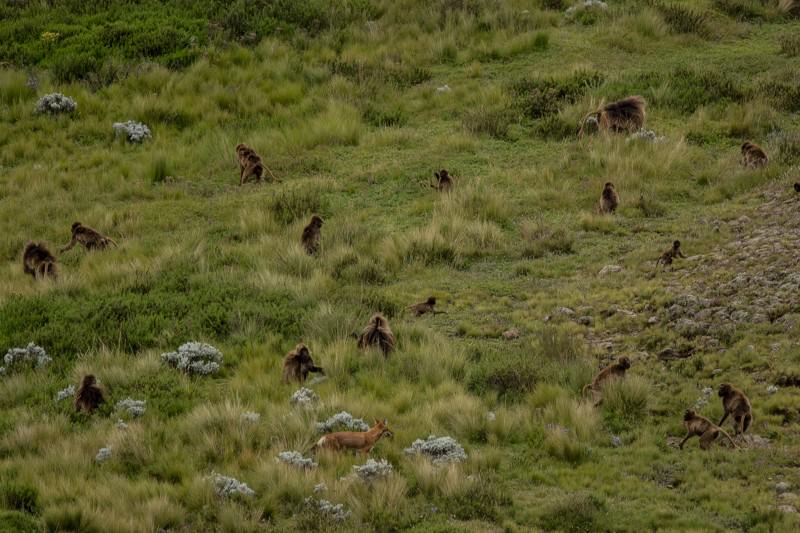When I think about the history of human evolution, I always feel a twinge of regret that our sibling human species didn’t survive to grow with us. The more I learn about the rest of the biosphere, the clearer it is to me that we’re just one among many species, each with a lineage as ancient as our own. As the original Grand Poobah would say, I can trace my ancestry back to a protoplasmal primordial atomic globule, along with the ancestries of my dog, my cat, and that damned fly that got in here somehow. As with the dogs, and cats, and flies, we did not evolve in isolation. We were not always the only species on the planet with our kind of intelligence, and I think it’s sad that, for whatever reason, the rest of humanity didn’t manage to survive and thrive alongside Homo sapiens.
There’s also hope for the future though. While I will almost certainly never live to see another high-tech life form interacting with humanity, there’s always a chance that other people will. I understand that I’m being seriously optimistic here, but I think that if human civilization manages to last for tens, or hundreds of thousands of years, we’re both likely to encounter other intelligent life, and we’re likely to develop a society that’s not going to consume itself with xenophobia upon that encounter.
That vague hope is part of why it made me so happy when my wife sent me this article that I had missed back in June:
In the alpine grasslands of eastern Africa, Ethiopian wolves and gelada monkeys are giving peace a chance. The geladas – a type of baboon – tolerate wolves wandering right through the middle of their herds, while the wolves ignore potential meals of baby geladas in favour of rodents, which they can catch more easily when the monkeys are present.
Basically, the monkeys allow the wolves to become part of the herd, and to use that as a way to surprise unwary rodents. Good behavior is enforced by the geladas, of course, and if you compare sizes in this picture, it’s clear that the only way wolves can do anything in that herd is if the monkeys allow them to.

If left alone, where will this relationship end up? Could this be the beginning of a relationship like our own with dogs? I have no idea, but I really, really hope this is still going on, and going strong by the time I die. It seems unlikely at the moment, but hey, what are we fighting for?
Today I’m fighting for literate baboons that ride wolves.
If you found this post useful or enjoyable, please share it! If you think the contents of this blog are worth a dollar a month please consider becoming a patron over at my Patreon page. Your donations make this blog possible, and even as little as one or two dollars per month adds up to make a difference. If you feel you can afford more than that, you can get access to all sorts of other content and perks! Your patronage allows me to put more of my time and energy into making this blog a useful resource. Thanks for reading!


Maybe the wolves are domesticating the baboons.
(testing comment system)
I understand for it to qualify as domestication, the interspecies interaction needs to be regular between certain individuals, one species need to be clearly socially/physically dominant in that relationship and the other needs to show some genetic adaptation into the relationship.
I’m looking for a wolf culture with a rich oral history of sung sung sagas based around baboon herding.
There’s a very clear power differential, and some discernment of individuals – wolves who misbehave are permanently kept out of the group.
As to genetic change, how fast that will happen should depend on how much easier hunting is among the herd. It all depends on how long this relationship continues.
Still, hopefully we’ll get more information in a year or two from the folks studying the phenomenon.
Fair call, Sophy.
Why do you think the kid on the left is a boy?
and that is NOT a “handax”
that is a knife or a spear-point
@Chigao – from the artist:
“Father’s Day – or how to make a proper Mousterian hand axe (Father’s Day is celebrated today in Finland, Estonia, Sweden, Norway and Iceland).”
If you actually dig around, you’ll notice that a LOT of things classified as hand axes have a similar pointed shape.
As to assuming the gender, it was just that – an assumption; either because of my ingrained expectations of gender roles, or because I looked an awful lot like that as a kid. I don’t know what the artist intended, but I don’t see why it would have to be a boy.
It’s been a long time since I did any flint knapping, but that looks very much like Mousterian lanceate hand axe to me. It looks too big to be a spear point of that period, and (IIRC) most Mousterian knives were more-or-less straight flakes.